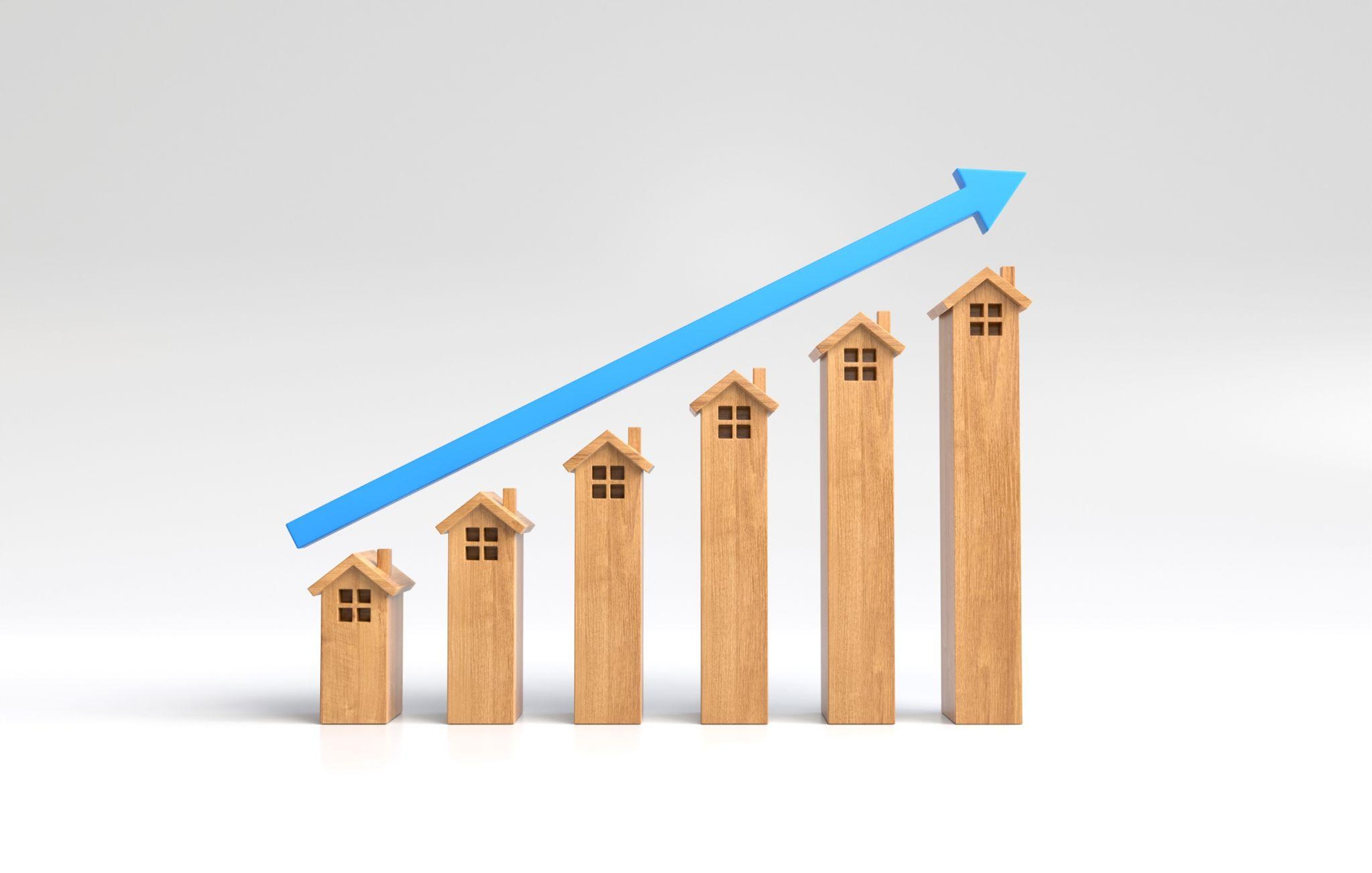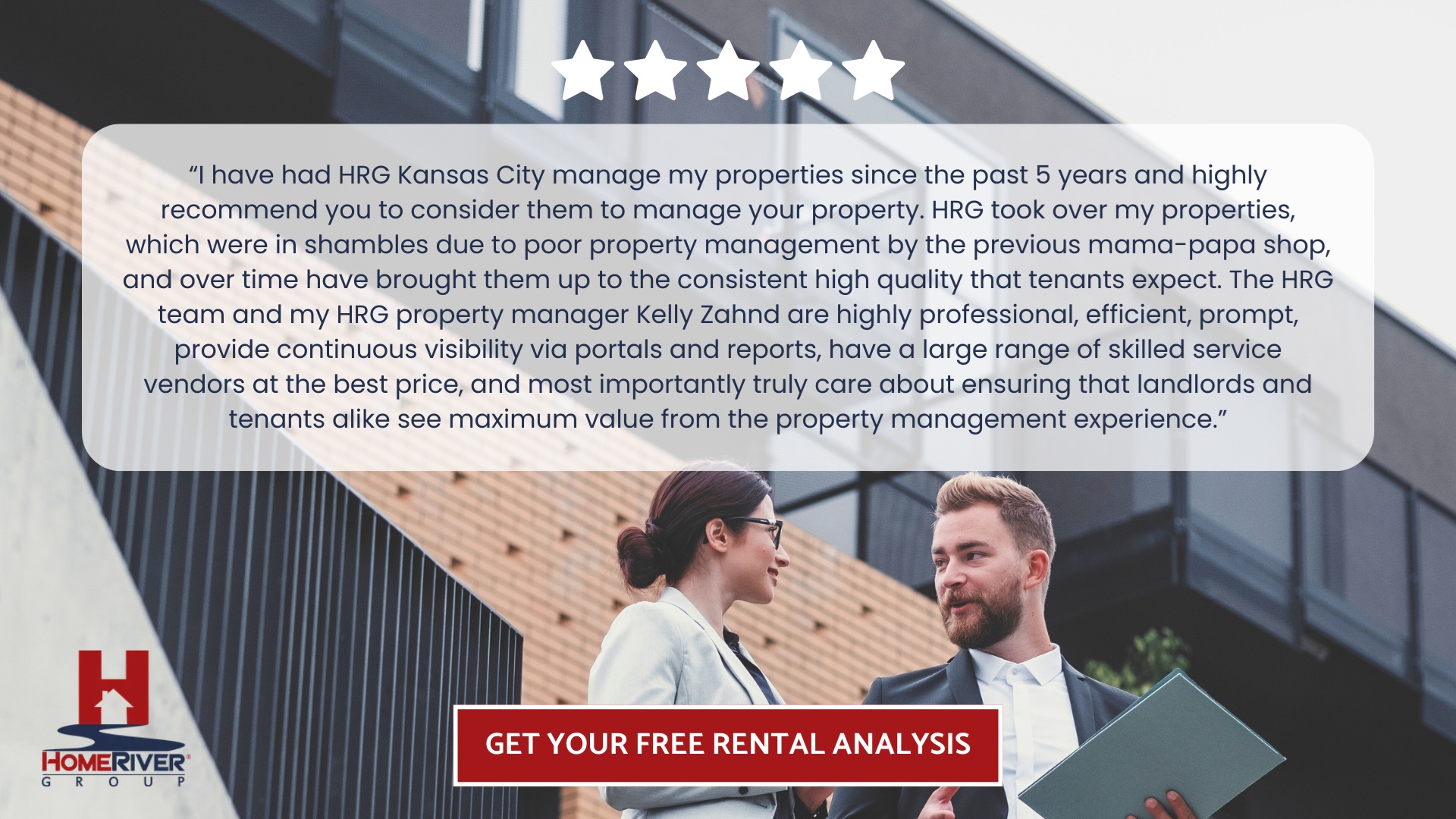
At HomeRiver Group, we manage more than properties—we manage performance. With decades of industry experience, nationwide coverage, and local expertise, we deliver tailored solutions that maximize ROI and minimize stress. We handle everything from leasing and rent collection to market analysis and compliance. Our proactive strategies, expert team, and cutting-edge technology make us the trusted partner for landlords seeking stability, growth, and peace of mind.
Rent increases are part of every landlord’s long-term strategy—but how much should you raise it, and when? Annual adjustments depend on market conditions, inflation, and property costs, but staying competitive without driving away good tenants is a delicate balance. Understanding typical benchmarks and local limitations helps you plan smarter, maintain occupancy, and keep your rental investment on track. If you’re asking how much does rent increase per year, you’re not alone.
In this blog, we will explore the typical range of annual rent increases, the key factors that drive those changes, how laws and regulations impact your options, and best practices for implementing rent adjustments while maintaining strong tenant relationships.
Factors That Influence Annual Rent Increases
When examining how much rent increases per year, it’s crucial to consider the variety of factors at play because rental adjustments aren’t random.
Here are the key elements that shape yearly rent changes:
Market Demand And Supply
The law of supply and demand is a significant driver. If demand for rentals in your area surges due to population growth, new employment opportunities, or limited housing, landlords may raise rents to match the market. Conversely, a surplus of rental properties or economic downturns can dampen increases, or even prompt reductions.
Local Economy And Job Market
A strong local economy and robust job growth tend to push rents higher. Well-paid workers looking for homes create higher demand, especially in sought-after neighborhoods. Conversely, layoffs or economic slowdowns often ease housing demand, making aggressive rent hikes less likely.
Property Operating Costs
Rising property taxes, insurance premiums, maintenance expenses, and utility costs all figure into the equation. Property owners faced with increased costs may raise rents accordingly to maintain profitability and fund ongoing property improvements.
Rent Control And Local Regulations
Some states and municipalities impose rent control measures or cap allowable increases. In these areas, annual rent hikes are tightly regulated, often pegged to inflation or a set percentage. In markets without such restrictions, yearly increases tend to vary more widely.
Rental Property Upgrades
Improvements and renovations can justify higher rents. If a property has undergone significant upgrades—like a remodeled kitchen, upgraded amenities, or energy-efficient systems—landlords may set new, higher rent benchmarks for incoming or renewing tenants.
Lease Structure And Terms
The specifics of your lease agreement can also impact rent increases. Longer-term leases might lock in rates for several years, providing stability. By contrast, annual leases or month-to-month arrangements can allow for more frequent adjustments in line with current market conditions.
Each factor contributes to the equation, combining market forces and property-specific variables to determine how much rent can increase year over year.
Average Rent Increase Percentages Across The Country
Navigating rent increases can be challenging, especially as rates shift annually and vary across markets. Historically, the average annual rent increase in the United States has fallen between 3% and 5%. This range is a general benchmark, but real-world percentages often fluctuate based on location, local demand, and broader economic forces.
Urban vs. Rural Market Behavior
Major metropolitan areas tend to exceed national averages, with increases pushing closer to 7% in hot markets where competition is fierce. Due to demand and limited inventory, coastal hubs like San Francisco, New York, and Miami typically post higher-than-average hikes. On the other hand, smaller cities or rural areas may stay near—or below—national norms, depending on vacancy rates and slower-moving markets.
Economic Pressures And Landlord Cost Adjustments
Broader economic trends also impact rent growth. Inflation, rising property taxes, and higher maintenance costs often lead landlords to raise rents to protect margins. In contrast, during economic slowdowns or periods of wage stagnation, landlords may ease increases to retain stable tenants.
State Regulations And Local Variability
Where you operate also plays a critical role in rent control and increasing thresholds. Rent-controlled areas—like parts of California and Oregon—commonly cap increases around 5% to 10% plus inflation. Regulations such as rent increase laws in North Carolina add another layer of local compliance for landlords.
Understanding State-Specific Rent Rules
In states without rent control, landlords typically have more leeway. For example, the maximum rent increase allowed in Texas is not capped, but landlords must still provide reasonable notice and avoid discriminatory practices. Meanwhile, the percentage a landlord can raise rent in Florida is also uncapped statewide, but rent increases must still comply with lease terms and notice requirements.
Strategic Benchmarking For Smarter Pricing
Tracking national averages and local patterns allows landlords to adjust pricing strategies confidently. Whether negotiating a lease renewal or setting a new rental rate, understanding what’s typical—both broadly and regionally—helps protect tenant retention while preserving profitability.
Tips For Negotiating Rent With Tenants
Achieving a fair rent increase carefully balances safeguarding your investment and maintaining solid tenant relationships.
Here are strategic tips for negotiating rent with your tenants:
Start the Conversation Early: Initiate your rent renewal discussions at least 60 to 90 days before the current lease expires. Early communication demonstrates transparency and gives tenants time to process the change, reducing the chances of negative surprises.
Do Your Homework: Come to the table armed with data. Research comparable rents in your area using up-to-date listings and recent lease amounts from similar properties. Reference concrete market trends, not just personal preference, when justifying your proposed increase.
Highlight Property Improvements & Value: If you’ve invested in upgrades or handled maintenance issues promptly, cite these when discussing adjustments. Remind your tenants of the added value they’re receiving by staying in your property.
Listen & Show Willingness To Negotiate: Give tenants room to share their feedback and concerns. Sometimes, a tenant may counter-propose a slightly smaller increase or a longer lease in exchange for rate stability or request small property improvements. Consider these requests seriously—retaining a responsible tenant is often worth modest concessions.
Be Clear & Professional In Written Communication: Always follow up verbal negotiations with a clear, detailed written notice outlining the new terms. Transparency and professionalism minimize misunderstandings and help the process move smoothly.
Know Local Laws & Regulations: Understanding your state’s and municipality’s rent increase restrictions ensures you negotiate within legal boundaries. Compliance builds trust and protects your interests.
Approaching rent negotiations with preparation, empathy, and open communication can transform an uncomfortable conversation into an opportunity for mutual agreement—and a long-lasting, positive landlord-tenant relationship.
Common Mistakes To Avoid With Rent Hikes
Raising rent might seem straightforward, but pitfalls can impact your bottom line or tenant relationships.
Here are some of the most common missteps landlords make when increasing rent—and how to sidestep them:
Ignoring Local Regulations
Every city and state has rules regarding how much rent can be raised and how often. Overlooking these can quickly land you in hot water, from legal disputes to hefty fines. Always double-check local rent control ordinances before you notify tenants of an increase.
Poor Communication
Surprising tenants with a sudden rent hike or failing to provide proper notice is a recipe for frustration and vacancies. Open, timely, and transparent communication helps maintain trust and gives tenants time to plan, reducing the risk of losing good residents.
Raising Rent Too Drastically
It’s tempting to bump rent up significantly, especially in competitive markets. But large increases can backfire, prompting reliable tenants to look elsewhere. Modest, consistent raises often retain tenants longer and ensure steadier income.
Neglecting Market Research
Basing your rent hike on gut feeling or regional trends can miss the mark. Failing to analyze comparable local rentals—not just national or citywide averages—could mean pricing yourself out of the market or leaving money on the table.
Overlooking Property Improvements
Tenants are more likely to accept and appreciate rent increases when they see tangible value. If you haven’t addressed maintenance, upgrades, or general property upkeep, a rent hike will feel unjustified and may invite resistance or turnover.
Leveraging Professional Property Management Services
Navigating rent increases can be intricate, especially in today’s fast-moving real estate market. Attempting to manage property updates, market research, regulatory compliance, and proactive tenant communication can quickly become overwhelming, even for seasoned property owners. That’s where professional property management services come into play.
Access To Local Market Insights And Data
With a professional management team, you gain access to real-time local market data and expert analysis. Trained property managers monitor the pulse of neighborhoods, noting trends in rental rates and tenant expectations. This allows you to set annual rent adjustments that reflect the actual market situation, eliminating guesswork and minimizing pricing missteps.
Compliance With Rent Control And Legal Requirements
In addition, professional managers are well-versed in ever-evolving landlord-tenant laws and rent control ordinances. They stay current on federal, state, and local regulations to help ensure that any rent increase aligns with applicable statutes. Detailed documentation and formalized communication protocols reduce the risk of legal issues and provide a clear compliance record.
Tenant Communication And Retention Support
The right partner will not only execute rent increases smoothly but also assist in justifying those changes to renters. This helps improve tenant understanding, promote transparency, and enhance retention rates. Whether drafting rent adjustment notices or addressing tenant concerns, experienced property managers facilitate smoother transitions with less resistance and fewer vacancies.
Operational Efficiency And Peace Of Mind
Professional property management adds value from compliance to communication by streamlining critical processes. This efficiency protects your investment and enhances the tenant experience—two essential components for sustainable portfolio performance.
Final Thoughts
Understanding how much rent increases per year is essential, whether you’re a property owner, investor, or renter aiming to make informed decisions. Market factors, local regulations, property enhancements, and economic shifts all play a role in shaping annual rent adjustments, and the landscape can change quickly. As the rental market evolves, staying proactive, transparent, and strategic in setting and responding to rent increases is critical.
At HomeRiver Group, we combine our nationwide reach with deep local knowledge to help you take the guesswork out of annual rent changes. Our unified platform allows us to track market trends, abide by local legislation, and implement best practices—all while prioritizing your property and investments.
For those who want to stay ahead in the ever-changing rental market, partnering with a trusted, knowledgeable property management partner is not just an option—it’s a competitive advantage.
Read also:
Rental Property Vacancy Rate: What’s Normal And How To Improve It
How A Cash-Out Refinance On Rental Property Can Boost Your Portfolio
Frequently Asked Questions About How Much Does Rent Increase Per Year
What factors influence how much rent can increase?
Property expenses, local market conditions, tenant demand, lease agreements, and government regulations influence rent increases. Things like neighborhood development, upgrades, and shifts in employment in the area can all play a role. At HomeRiver Group, we leverage market analytics and local expertise to provide guidance specific to your rental’s location.
How much notice must landlords give tenants before raising rent?
Notice periods vary by state, but most require at least 30 to 60 days’ written notice before a rent increase takes effect. For month-to-month leases, local laws often require minimum notification periods. HomeRiver Group ensures compliance with all relevant local and state laws, protecting you and your tenants.
How do location and market conditions affect rent increases?
Properties in high-demand neighborhoods or growing cities may support larger rent increases, while areas with slower growth or oversupply may see more modest adjustments. Market conditions, including employment trends and economic factors, directly impact how much rent can increase each year. Our team stays on top of these trends to help you make informed decisions, backed by HomeRiver Group’s national platform and local insights.
Can I raise the rent on a fixed-term lease?
Generally, you cannot increase rent during a fixed-term lease unless it specifically allows for it. Rent increases typically occur at lease renewal or when a new agreement is signed. We help you structure your leases to build flexibility while providing complete transparency to your tenants.
What is a fair rate for a rent increase?
A “fair” rent increase reflects property-related cost increases and comparable market rates for similar rentals in your area. Across the U.S., annual increases often range from 3% to 5%, but local conditions may justify a higher or lower figure. HomeRiver Group’s experienced team provides you with data-driven recommendations to ensure your rate adjustments are both justified and competitive.
How do I calculate the rent increase for my property?
Start by assessing changes in your operating costs, referencing comparable property rents, and checking your state’s regulations. Calculate the percentage increase, apply it to your current rent, and round it out as needed.











